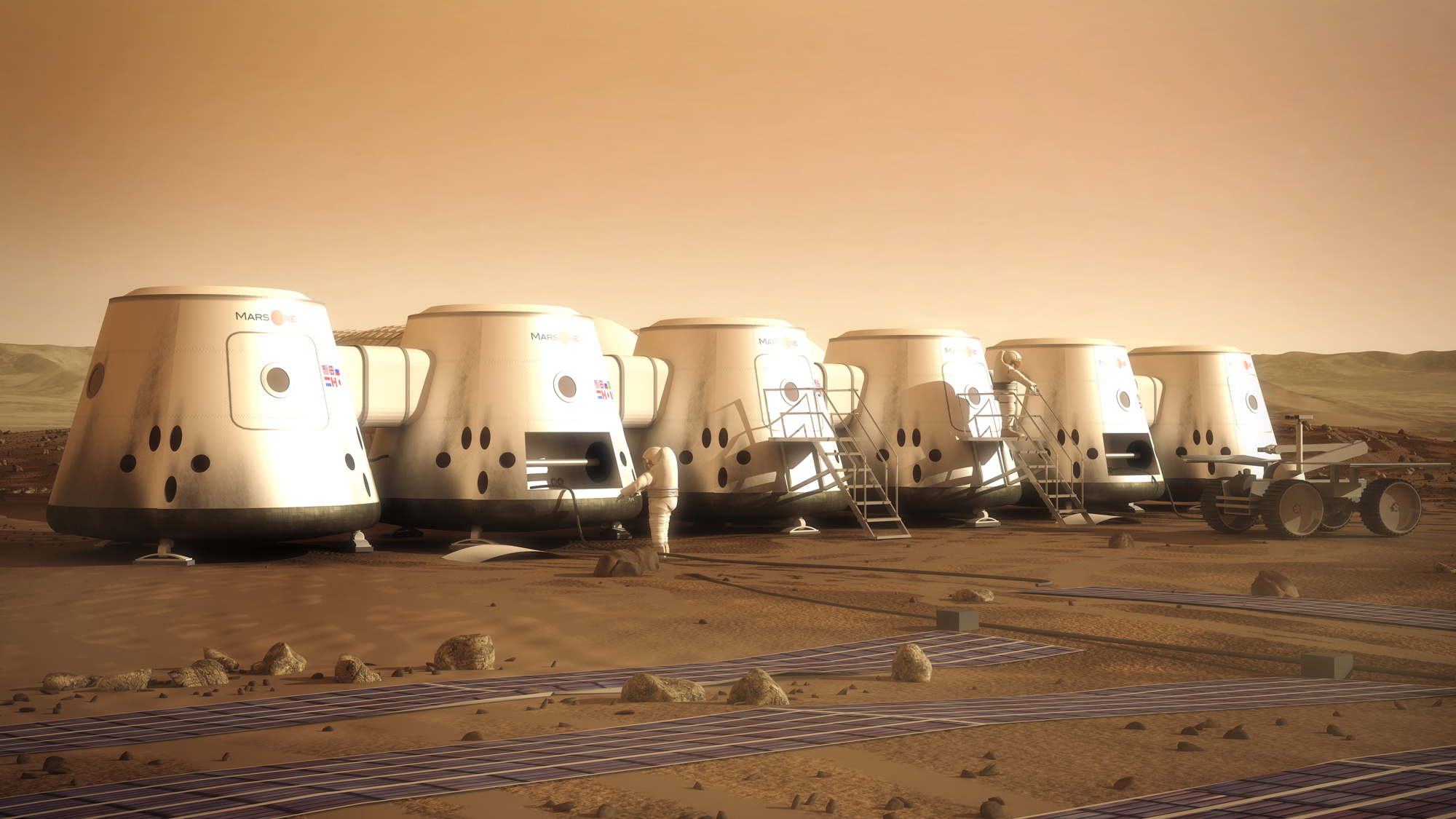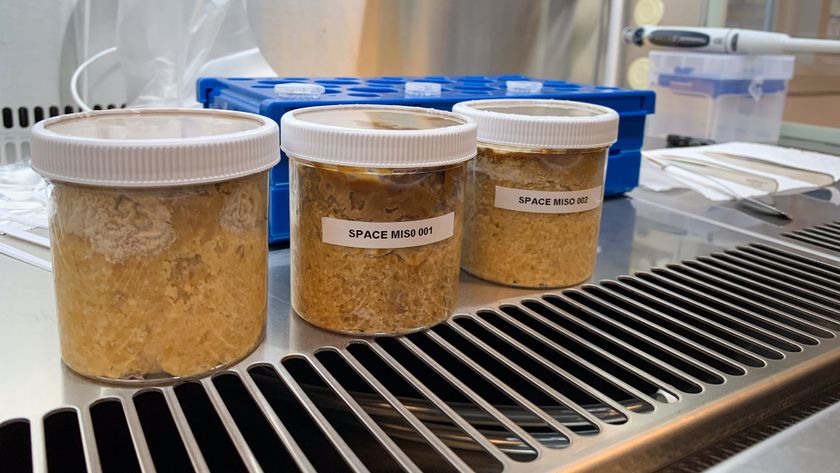
Editor's Note: In this weekly series, SPACE.com explores how technology drives space exploration and discovery.
Ambitious exploration efforts have always aimed for self-sufficiency, but the need is especially acute when the new terrain being traversed is another planet. Extensive resupply from Earth would be prohibitively expensive, experts say, so exploiting Red Planet resources is crucial to making pioneering manned missions affordable in the short term and Mars settlement sustainable over the long haul.
"We want to move and explore in a very similar manner that we've done in the past, so that we can live off the land to make all these missions very cost-effective and more efficient," Prasun Desai, acting director of the Strategic Integration and Analysis Office in NASA's Space Technology Mission Directorate, said last Tuesday (Aug. 6). [The Boldest Mars Missions in History]
The goal is to enable the exploration of Mars "in a much more aggressive manner, so that we can really get a sense of, Are we alone in the universe?" added Desai, who was speaking at a celebration at NASA Headquarters in Washington, D.C. marking the first year on the Red Planet for the agency's Curiosity rover.
Martian resources
![Since the 1960s, humans have invaded our neighboring planet Mars with swarms of spacecraft. Only about half of the attempts have been successful. See how many robot missions to Mars have launched in this SPACE.com infographic. [See the Full Occupy Mars Infographic]](https://cdn.mos.cms.futurecdn.net/axtSHqkGu8QzSEiswjhZ6d-320-80.jpg)
The Red Planet may be cold and dry, but it harbors a wealth of resources that pioneering astronauts could extract and exploit, said Robert Zubrin, president and founder of the Mars Society. This non-profit organization advocates manned Mars exploration and is hosting its 16th annual conference on the topic Aug. 15-18 in Boulder, Colo.
For example, astronauts could generate oxygen and rocket fuel (for potential trips home to Earth) by pulling feedstock out of the Red Planet's thin, carbon dioxide-dominated atmosphere, Zubrin said. And they could get all the water they need from the dirt under their boots.
Get the Space.com Newsletter
Breaking space news, the latest updates on rocket launches, skywatching events and more!
"We now know that Martian soil has water in it," Zubrin told SPACE.com. "Even at the equator, it's 5 percent water by weight; in the Arctic regions, it's 60 percent water by weight. And we've developed technology that can bake water out of that soil and make it available."
This water, along with Mars' plentiful carbon dioxide, would make it feasible to grow crops for food and other plants to make products such as clothing, at least in some regions, he added.
"Sunlight at the Martian equator is about equal to that of Norway," Zubrin said. "And there's also nitrogen and all the other elements needed to make fertilizers and so forth."
Iron oxide and silicon oxide are also common in Martian soil, so human pioneers would be able to make iron, steel and glass, he said. And the availability of water and carbon dioxide would allow them to make plastics as well. [Future Visions of Human Spaceflight]
"This civilization [here on Earth] was built on iron, steel and natural fibers until the 20th century," Zubrin said. "We can do all of that."
Complicated products such as computer chips would likely have to be imported from Earth for a long time to come, he added. But most such items would be lightweight, greatly reducing the mass — and therefore cost — of necessary resupply missions.

Powering a new society

Living on Mars will require a considerable amount of power, of course. While solar panels and radioisotope thermoelectric generators (which convert the heat of radioactive decay into electricity) have powered robotic NASA rovers on the Red Planet, new strategies will be required for manned missions, Desai said.
"We're going to need a lot more power for when humans are on the surface with a lot larger vehicles, to be able to operate those types of systems," he said.
NASA's Space Technology Mission Directorate is researching a number of possibilities, including more efficient fuel cells and better batteries to improve energy storage, Desai added.
While such technologies could help support the first pioneering steps on the Red Planet, a long-lasting human society on the Red Planet may require a more potent power source. And Zubrin thinks it can be found underground.
Some Martian volcanoes last erupted just a few hundred million years ago, he said, and Mars-orbiting spacecraft have found evidence for a subsurface water table, which could only exist on the frigid planet in the presence of internally generated heat.
"There is hot stuff underground," Zubrin said, noting that geothermal energy is the number four power source here on Earth, after combustion, nuclear and hydroelectric. "We should be able to locate places where we can drill down and access geothermal heat, which might also give us liquid water as well, which would be convenient."
Initial drilling to tap into this heat would be done using nuclear power, he added.
Becoming self-sufficient
A manned Mars outpost will likely be supported financially at first by governments, foundations or extremely wealthy individuals here on Earth, Zubrin said. But if it hopes to last over the long term, it must eventually come up with a way to support itself and pay for its imports.
Red Planet settlers may be able to send some gold and other precious metals back to a picked-over Earth, Zubrin said, but such heavy materials are extremely expensive to launch. He thinks it's more likely that a Mars colony's main export will be intellectual property.
The frontier environment on Mars will serve as an incubator of innovation, just as it did in the United States, Zubrin added.
"You have, typically, a severe labor shortage and an extremely challenging environment, and so you're forced to innovate," he said. "This is where you get this culture of invention in 18th and 19th, even into 20th century America."
"The Martian frontier is going to amplify this to a much greater degree," he added.
Areas ripe for potential Red Planet innovation include robotics and agriculture, Zubrin said. And if indigenous life on Mars is ever discovered, its genome could be incredibly valuable, both scientifically and financially.
Going to Mars
Putting boots on Mars is the main goal of NASA's human spaceflight program, and the space agency isn't the only organization with Red Planet dreams.
The Netherlands-based nonprofit Mars One aims to land four people on the Red Planet in 2023 as the vanguard of a permanent settlement there. Mars One estimates this initial mission will cost about $6 billion, and the organization plans to foot most of the bill by staging a global media event around it.
And billionaire entrepreneur Elon Musk, the founder of private spaceflight firm SpaceX, said late last year that he wants to help establish a Mars colony of up to 80,000 people. Indeed, Musk has said he started SpaceX primarily to help humanity become a multiplanet species.
Zubrin is confident that somebody will eventually break through, and our species will establish an outpost on Mars.
"The idea is out there," he said. "Sooner or later, it's going to happen."
Follow Mike Wall on Twitter @michaeldwall and Google+. Follow us @Spacedotcom, Facebook or Google+. Originally published on SPACE.com.
Join our Space Forums to keep talking space on the latest missions, night sky and more! And if you have a news tip, correction or comment, let us know at: community@space.com.

Michael Wall is a Senior Space Writer with Space.com and joined the team in 2010. He primarily covers exoplanets, spaceflight and military space, but has been known to dabble in the space art beat. His book about the search for alien life, "Out There," was published on Nov. 13, 2018. Before becoming a science writer, Michael worked as a herpetologist and wildlife biologist. He has a Ph.D. in evolutionary biology from the University of Sydney, Australia, a bachelor's degree from the University of Arizona, and a graduate certificate in science writing from the University of California, Santa Cruz. To find out what his latest project is, you can follow Michael on Twitter.











